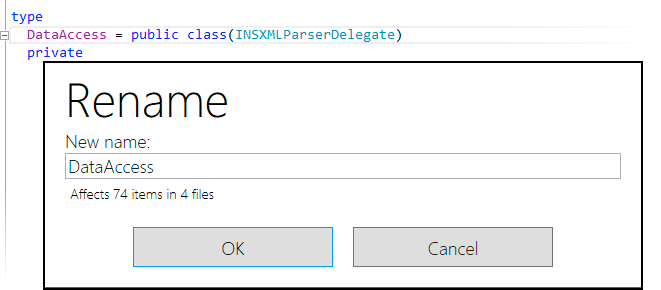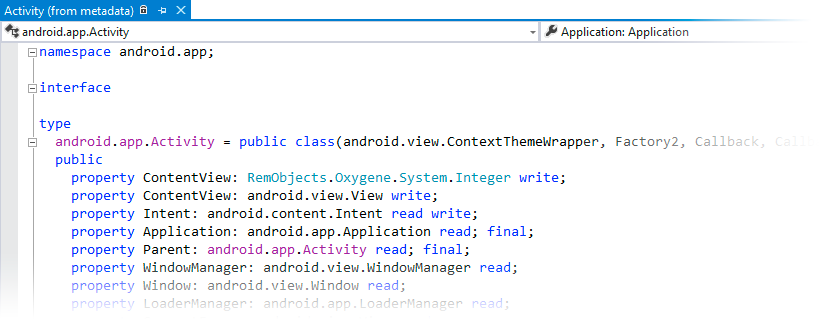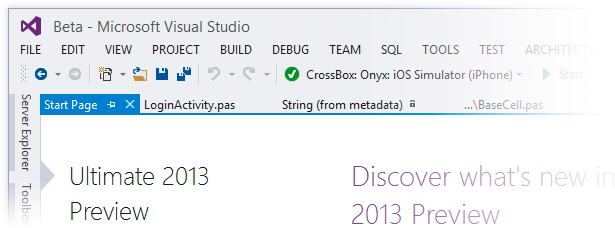What's new in Oxygene 6.1
This page will give you an overview of what's new in Oxygene 6.1, our first feature update since the introduction of Oxygene for Cocoa in May. It is also the first release not available under the Embarcadero Prism branding anymore.
New IDE Features
Probably the most significant and long awaited new feature in 6.1 is the introduction of our Refactoring engine and the first refactoring: Rename, which allows you to safely rename identifiers across the entire solution with a single click.

Rename is only the first of many refactorings we have planned, and we're shipping it first and alone, to test the waters. Over the upcoming years, more refactorings will be added (and we're looking forward to feedback as to which refactorings are most important to you).
The Go To Definition editor feature has also been significantly enhanced. In addition to letting you navigate across your solution, GTD can now also be invoked on identifiers from externally referenced libraries and frameworks, and it will bring up a read-only source code view with the type declaration in plain Pascal – no matter if the original type is from a .dll written in C#, a .jar file written in the Java language, or an .fx file in Objective-C.

Our support for the ASP.NET MVC platform has also been improved, finally bringing support for version 4.0 and the all-new ASP.NET MVC 4.5 technologies in Visual Studio 2012.
Also, Oxygene 6.1 adds official support for Visual Studio 2013 Preview. The current release has been tested extensively with the Preview made available at //build/ and with later internal CTPs.
As with the 2012 version, RemObjects Software are once again one of only a handful of official "Sim-Ship" Partners for Visual Studio 2013 that are working with Microsoft to have first-class support shipping at the same time as Visual Studio 2013. We expect that the current release will work without complication with Visual Studio 2013 RTM when it will be available later this year, but we will of course continue to test and improve the interation as we near RTM.

New Language and Compiler Features
Oxygene 6.1 brings a few great improvements to the language for Cocoa development. The most significant enhancement is probably the extended support for Deployment Targets and Weak Linking that makes it even easier to build applications against the latest SDKs while still supporting older OS versions – something especially important now with the imminent release of iOS 7.
As part of this, Oxygene 6.1 also provides optional hints for locating code that is potentially unsafe for older targeted SDK versions – a feature noticeably absent from Xcode and Objective-C.

You can read more about Deployment Targets [on the Wiki].(wiki.oxygenelanguage.com/en/Deployment_Targets).
Also new in 6.1 is the ability to declare Optional Interface Members on the Cocoa platform, with the new optional; modifier.
New in the September 2013 release (6.1.55)
The September 2013 update to 6.1 introduces official support for the just-released iOS 7.0, and support for 64-bit iOS Simulator, updates the toolchain for working with .xib and .storyboard files to be compatible with the new Xcode 5, and improves interaction with the iOS Simulator from the IDE.
Also new in this is support for Java Native Interfaces (JNI) on the Java platform.
Check out RemObjects C#, Swift or Iodine (Java)!

